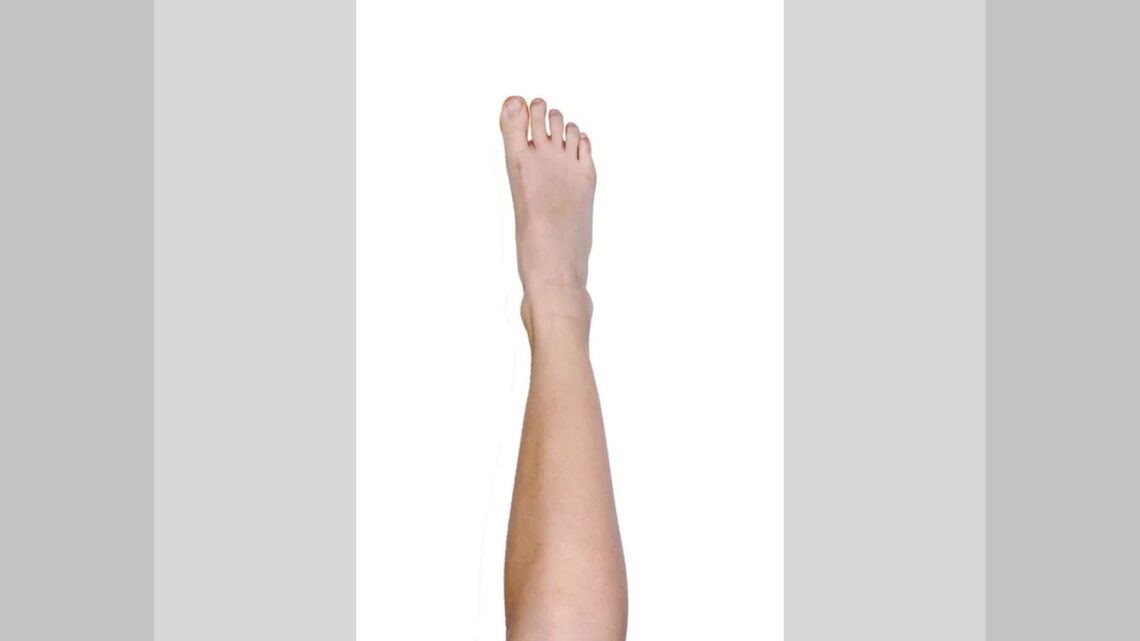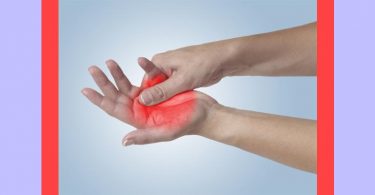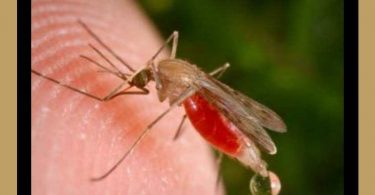May 2018: E.J. is a 35 year old woman with a swollen right ankle. The ankle has been swollen and painful for five years, but has gotten worse over the prior month. E.J. was a professional ballet dancer for ten years. She disclosed that her ankles seemed to roll under her when she is jumping, so she injured them often. During her dancing she also injured her back and broke the first toe on her left foot.
Currently, her right ankle is swollen around the lateral malleolus and she experiences sharp pain while walking. She exhibits a tottering gait when she walks due to the pain. Elevation ameliorates the pain.
She has anxiety that feels like an electrical sensation that radiates from her solar plexus to her shoulders and Adam’s apple. Eating relieves this sensation. Eating also helps E.J. when she has insomnia. With the insomnia, she concomitantly has the urge to micturate every few minutes.
She has a sacral pain that is worst when she lies in bed but disappears by the time she wakes up. The sacral pain is sharp and ameliorated by warmth and intense pressure. The sacral pain is independent of the micturition/sleeplessness.
E.J. also becomes nauseous on boats and in cars. The nausea is worse in enclosed air, in loud noise and in the heat.
Assessment:
E.J. is unequivocal that she wants treatment to focus on her ankle; she has seen a homeopath previously and the insomnia and anxiety have been much helped by Nat-Mur, but her ankle has never changed. The back pain and the ankle pain are likely separate diseases. The back symptoms occur separately from the ankle. The back is an issue at night and is not aggravated by walking, unlike the ankle.
Rubrics (Complete 2016 repertory):
extremities; SWELLING; ankles (135)
extremities; PAIN; ankles; right (97)
extremities; ANKLES; outer, lateral (56)
extremities; PAIN; ankles; walking; while (94)
extremities; PAIN; stitching; ankles (134)
extremities; LOWER limbs; raising limbs; amel. (48)
Strontium Carb fits the ankle symptoms and also has a pressure in the stomach which disappears after eating (Boenninghausen 1905).
Prescription: Strontium Carb 30C, every three days
June 2018: The pain was 90% better after the first dose. The ankle is much less swollen. A dry cough that is triggered by deep breathing has developed. This is a cough she has suffered from in the past. It resolved within a month. The pictures below are the ankle before and after one dose.
July 2018: Her ankle is pain free and the swelling is 80% better. However, she has become achy all over, especially bilaterally around the PSIS. She also has a pain in her left first toe that feels as if it’s broken (note that this is the toe she had broken dancing). She still struggles to fall asleep.
August 2018: E.J.’s ankle is still pain free and the swelling has completely resolved. The return of the toe pain has also passed. However, her insomnia has gotten worse. She couldn’t sleep until 2 or 4 in the morning. This is still combined with constantly needing to micturate. The insomnia no longer gets better with eating. The anxiety E.J. related in the first appointment has resolved.
There is still a sharp pain in the sacrum, right hip and a dull pain through the spinal column. The nausea in a boat or car also remains. It is felt in the epigastrium and aggravated by looking down, looking behind and noises.
Assessment:
Since the ankle has resolved but other symptoms remain, it’s clear that this was in fact a dissimilar disease. I next focused the analysis on the insomnia and car/sea sickness
Rubrics:
generalities; TURNING; around (20)
generalities; LOOKING; agg.; down (69)
sleep; FALLING asleep; late (207)
stomach; NAUSEA; riding in a carriage or on cars; agg. (67)
stomach; NAUSEA; seasickness (73)
bladder; URGING to urinate, morbid desire; night (184)
Calc Carb has “frequent nocturnal micturition” and an aggravation from turning the head and while looking around (Hahnemann 1835). Additionally, Calc Carb has an aggravation from noise (Hahnemann 1835)
Prescription: Calc Carb 30C, every other day
Sept 2018: A sensation of strength has returned in E.J.’s legs that disappeared a decade ago. She sleeps well on the days she takes the Calc Carb. She wants a higher dose.
Prescription: Calc Carb 200C, every other day
January 2019: She is “sleeping beautifully”. No urging to micturate nor hunger keeping her awake nor anxiety. Her car sickness is improving; she is able to look down at her phone and read a little in the car. Back pain is still an issue. She feels her back is crumbling and the pain is worst in the nape and around her sacrum.
Assessment: The back pain is the only complaint left and is not being helped by the Calc carb.
Rubrics:
back; PAIN; bed; in (87)
back; PAIN; pressure; amel.; hard (11)
generalities; APPLICATIONS; warm; amel. (134)
generalities; SHOCKS; electric, like (197)
Ruta has pain in the sacrum and nape, aching when lying down in bed, back pain that is better with hard pressure (Hahnemann, 1846).
Prescription: Calc Carb 200C, every other day and Ruta PRN
April 2019: E.J. took Ruta twice and her back pain went away and never returned. She continues to need the Calc Carb every other day. Her motion sickness is still improving.
Chronic ankle complaints after a sprain are currently thought to involve pathological changes to the surrounding ligaments and possible degeneration of the bone (Robinson & White 2002, van Ochten et al 2017). In allopathic treatment, strontium (in various salts)[1] has become a popular therapy for bone pathologies (Reginster, Pelousse & Bruyère 2013). Strontium ranelate (a synthetic strontium salt) has become a popular osteoporosis treatment (Seeman 2010). However, ligament strength and regrowth have also both been improved by strontium salts and elemental strontium (Kuang et al 2014, Bizelli-Silveira et al 2018). Strontium ranelate has also been shown to prevent bone resorption and promote bone regeneration (Nardone et al. 2015; Reginster, Pelousse, & Bruyère 2013). Calcium carbonate has similarly been shown to decrease bone resorption (Bristow et al., 2014) and prevent bone density loss (Dawson-Hughes et al., 1990). Therefore, both strontium and calcium are shown to support similar complaints in allopathic sources and homeopathic sources.
Bone is comprised of calcium (not in the carbonate form (Ross & Institute of Medicine (U. S.), 2011)) and elemental strontium (Cabrera, Schrooten, De Broe, & D’Haese, 1999)[2]. This may explain why many bone implants being studied now include calcium and strontium components (Ripamonti, Crooks, Khoali, & Roden, 2009; Neunzehn, Szuwart, & Wiesmann, 2015; Carmo et al., 2018; Jia et al., 2017; Li et al., 2017). There is even research on calcium carbonate nanoparticles and their ability to promote osteogenic differentiation in stem cells (Li et al., 2018).
Current understanding of strontium and calcium’s effects on the connective tissue show why these substances may be beneficial for complaints such as E.J.’s. However, each allopathic study shows such a minor piece of the therapeutic benefits that despite the number of studies on strontium and calcium, their allopathic use is limited. Additionally, drugs have to be rigorously tested for specific indications in order for allopaths to be able to prescribe them (rightly so). Currently, these drugs could theoretically be prescribed off label for chronic ankle pathologies, but, again, the studies’ myopic focus prevents any allopath from being able to see that these substances can help with chronic ankle complaints. In other words, homeopathic provings give homeopaths more flexibility in prescribing than allopathic drug studies.
This overlap in the homeopathic and allopathic usage of strontium and calcium carbonate is an excellent example of the superiority of homeopathic provings in discovering the usefulness of medicines; a proving of strontium and calcium carbonate in the early nineteenth century discovered the healing capabilities of these substances long before the studies above were published. Additionally, the homeopathic use of these substances for connective tissue trauma doesn’t require requisite knowledge of chronic ankle sprain pathogenesis.
I share this with the hope of it being an inspiration or motivation for those of in this profession to continue with the high standards of the provings Hahnemann started. Only through the meticulous provings of these remedies on healthy people have we gained the ability to prescribe for conditions that physiologists have not fully understood.
References
Bizelli-Silveira, C., Pullisaar, H., Abildtrup, L. A., Andersen, O. Z., Spin-Neto, R., Foss, M., & Kraft, D. C. E. (2018). Strontium enhances proliferation and osteogenic behavior of periodontal ligament cells in vitro. Journal of Periodontal Research, 53(6), 1020–1028. )https://doi.org/10.1111/jre.12601
Boenninghausen, C. M. F. von. (1905). Boenninghausen’s Characteristics and Repertory. (C. M. Boger, Trans.). Parkersburg, W. Va.
Bristow, S. M., Gamble, G. D., Stewart, A., Horne, L., House, M. E., Aati, O., … Reid, I. R. (2014). Acute and 3-month effects of microcrystalline hydroxyapatite, calcium citrate and calcium carbonate on serum calcium and markers of bone turnover: a randomised controlled trial in postmenopausal women. British Journal of Nutrition, 112(10), 1611–1620. https://doi.org/10.1017/S0007114514002785
Cabrera, W. E., Schrooten, I., De Broe, M. E., & D’Haese, P. C. (1999). Strontium and Bone. Journal of Bone and Mineral Research, 14(5), 661–668.
Carmo, A. B. X. do, Sartoretto, S. C., Alves, A. T. N. N., Granjeiro, J. M., Miguel, F. B., Calasans-Maia, J., & Calasans-Maia, M. D. (2018). Alveolar bone repair with strontium- containing nanostructured carbonated hydroxyapatite. Journal of Applied Oral Science: Revista FOB, 26, e20170084. https://doi.org/10.1590/1678-7757-2017-0084
Dawson-Hughes, B., Dallal, G. E., Krall, E. A., Sadowski, L., Sahyoun, N., & Tannenbaum, S. (1990). A controlled trial of the effect of calcium supplementation on bone density in postmenopausal women. The New England Journal of Medicine, 323(13), 878–883. https://doi.org/10.1056/NEJM199009273231305
Hahnemann, S. (1835). The chronic diseases, their peculiar nature and their homoeopathic cure. (P. Dudley, MD, Ed., L. H. Tafel, Trans.). Philadelphia: Boericke & Tafel.
Hahnemann, S. (1846). Materia Medica Pura (C. Hempel, trans.). New York: W. Radde.
Jia, X., Long, Q., Miron, R. J., Yin, C., Wei, Y., Zhang, Y., & Wu, M. (2017). Setd2 is associated with strontium-induced bone regeneration. Acta Biomaterialia, 53, 495–505. https://doi.org/10.1016/j.actbio.2017.02.025
Kuang, G.-M., Yau, W. P., Lu, W. W., & Chiu, K. Y. (2014). Local Application of Strontium in a Calcium Phosphate Cement System Accelerates Healing of Soft Tissue Tendon Grafts in Anterior Cruciate Ligament Reconstruction: Experiment Using a Rabbit Model. The American Journal of Sports Medicine, 42(12), 2996–3002.
Li, J., Yang, L., Guo, X., Cui, W., Yang, S., Wang, J., … Xu, S. (2017). Osteogenesis effects of strontium-substituted hydroxyapatite coatings on true bone ceramic surfaces in vitro and in vivo. Biomedical Materials (Bristol, England), 13(1), 015018. https://doi.org/10.1088/1748-605X/aa89af
Li, X., Yang, X., Liu, X., He, W., Huang, Q., Li, S., & Feng, Q. (2018). Calcium carbonate nanoparticles promote osteogenesis compared to adipogenesis in human bone-marrow mesenchymal stem cells. Progress in Natural Science: Materials International, 28(5), 598–608. https://doi.org/10.1016/j.pnsc.2018.09.004
Nardi, R., Masina, M., Cioni, G., Leandri, P., & Zuccheri, P. (2014). Generic – equivalent drugs use in internal and general medicine patients: distrust, confusion, lack of certainties or of knowledge? Part 2. Misconceptions, doubts and critical aspects when using generic drugs in the real world. Italian Journal of Medicine, 88–98. https://doi.org/10.4081/itjm.2014.399
Nardone, V., Zonefrati, R., Mavilia, C., Romagnoli, C., Ciuffi, S., Fabbri, S., … Brandi, M. L. (2015). In Vitro Effects of Strontium on Proliferation and Osteoinduction of Human Preadipocytes. Stem Cells International, 2015, 1–12. https://doi.org/10.1155/2015/871863
Neunzehn, J., Szuwart, T., & Wiesmann, H.-P. (2015). Eggshells as natural calcium carbonate source in combination with hyaluronan as beneficial additives for bone graft materials, an in vitro study. Head & Face Medicine, 11, 12. https://doi.org/10.1186/s13005-015-0070-0
Reginster, J.-Y., Pelousse, F., & Bruyère, O. (2013). Is there potential for strontium ranelate in the management of osteoarthritis? Clinical Practice, 10(2), 201–207. https://doi.org/10.2217/cpr.12.83
Reginster, J.-Y., Pelousse, F., & Bruyère, O. (2013). Is there potential for strontium ranelate in the management of osteoarthritis? Clinical Practice, 10(2), 201–207. https://doi.org/10.2217/cpr.12.83
Ripamonti, U., Crooks, J., Khoali, L., & Roden, L. (2009). The induction of bone formation by coral-derived calcium carbonate/hydroxyapatite constructs. Biomaterials, 30(7), 1428–1439. https://doi.org/10.1016/j.biomaterials.2008.10.065
Robinson, P., & White, L. M. (2002). Soft-Tissue and Osseous Impingement Syndromes of the Ankle: Role of Imaging in Diagnosis and Management. RadioGraphics, 22(6), 1457–1469. https://doi.org/10.1148/rg.226025034
Ross, A. C., & Institute of Medicine (U. S.) (Eds.). (2011). Dietary reference intakes: calcium, vitamin D. Washington, DC: National Academies Press.
Seeman, E., Boonen, S., Borgström, F., Vellas, B., Aquino, J.-P., Semler, J., … Reginster, J.-Y. (2010). Five years treatment with strontium ranelate reduces vertebral and nonvertebral fractures and increases the number and quality of remaining life-years in women over 80 years of age. Bone, 46(4), 1038–1042. https://doi.org/10.1016/j.bone.2009.12.006
van Ochten, J. M., de Vries, A. D., van Putte, N., Oei, E. H. G., Bindels, P. J. E., Bierma-Zeinstra, S. M. A., & van Middelkoop, M. (2017). Association between Patient History and Physical Examination and Osteoarthritis after Ankle Sprain. International Journal of Sports Medicine, 38(9), 717–724. https://doi.org/10.1055/s-0043-109554
[1] I do not mean to imply that all salts are created equal; it is well known that different salts of the same element have very different effects on the body (Nardi, Masina, Cioni, Leandri, & Zuccheri, 2014). However the research on strontium has not focused on strontium carbonate, but rather on strontium ranelate. Therefore I have grouped the strontium salts together.
[2] It is tempting to jump to the conclusion that because strontium and calcium are components of connective tissue, they will heal connective tissue. However that’s an impossible inference to prove, and this case likely disproves that conclusion with the final prescription of Ruta for what was likely a connective tissue trauma to E.J.’s back.







Good choice, selecting all remedies